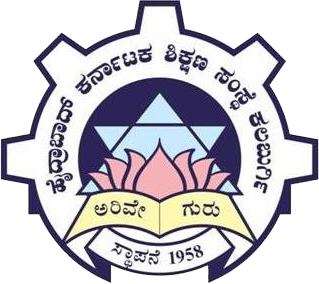Botany
Year of establishment: 1969

About the Department

1. To learn the importance of plants and its diversity in nature.
2. To understand the life cycle of plants with its distinctive classifications.
3. To acquire the knowledge of modern techniques in plant multiplication and production of standard varieties.
| SL. NO | NAME OF THE STAFF | Designation | Qualification | Experience | PHOTO |
|---|---|---|---|---|---|
| 1 | Smt. Sana Murad | Lecturer | M.Sc., M.Ed. | 05 Years |  |
| 2 | Mr. Gangappa Saukar | Lecturer | M.Sc. | 02 Months |  |
1. CALENDER OF EVENTS
2. DEPARTMENT MEETINGS.
3. TEACHING PLANS.
4. CLASS TEST
5. FEED BACK
| Academic Year | Strength |
|---|---|
| 2017-18 | 208 |
| 2018-19 | 199 |
| 2019-20 | 189 |
| 2020-21 | 127 |
| 2021-22 | 82 |
| 2022-23 (Current Year) | 60 |
❖ Assignments
❖ Seminars
❖ Field work
❖ Group activity
❖ Test
❖ Group discussion
| Cognitive Domain | SEMESTER | |||||
|---|---|---|---|---|---|---|
| I | II | III | IV | V | VI | |
| CREATE | 4 | 5 | 3 | 4 | 4 | 3 |
| EVALUATE | 5 | 4 | 4 | 3 | 4 | 5 |
| ANALYZE | 3 | 3 | 4 | 5 | 6 | 4 |
| APPLY | 4 | 5 | 3 | 3 | 4 | 4 |
| UNDERSTAND | 4 | 5 | 3 | 4 | 5 | 3 |
| REMEMBER | 3 | 4 | 3 | 4 | 4 | 5 |
| Year | Pass Percentage |
|---|---|
| 2017-18 | 93% |
| 2018-19 | 68% |
| 2019-20 | 97% |
| 2020-21 | 97% |
| Year | Name of the Students | Register Number | Percentage |
|---|---|---|---|
| 2017-18 | Kavya K Shabadi | 1645126 | 93.00% |
| 2018-19 | Akshata Shivaraj | 1749187 | 83.00% |
| 2019-20 | Jyoti S J | 1866043 | 88.66% |
| 2020-21 | Shaista Parveen | 1949629 | 77.00% |
Area of the laboratory 210 sq.ft . The department is well
equipped with Digital instruments like,
1.COMPOUND MICROSCOPES
2.DISSECTING MICROSCOPES
3.TRINOCULAR MICROSCOPE
4.LCD PROJECTOR KINDERMANN SLIDE PROJECTOR
5.LAMINAR AIR FLOW CHAMBER
6.CENTRIFUGES
7.PH METER
8.RAIN GAUGE
9.ANEMOMETER
10.NO. OF CHARTS MODELS
11. PLANT MATERIAL MUSEUM SPECIMEN GLASS WARES
12. CHEMICALS PHOTOS OF THE EMINENT BOTANISTS
Total no. of Botany Volumes in main Library: 513
No. of Volumes in Department : 25


1. Safranin
2. Ecetocarmine
3. Cobalt chloride
4. Glycerine
5. Hydro chloric acid
6. Sulphuric acid
7. Nitric acid
8. Butanol
9. Iodine
10.Potassium hydroxide
11. Sodium bicarbonate
12. Crystal violet
13. Agar Agar:01
14. Glucose Anhydrous:01
15. Butane:04
16. D.P.X:1
17. Xylene rectified:01
18. Xylene sulphur free:2
19. Acetone LR:3
20. Acitic acid Glacial:2
21.Glycerol purified LR:1
22. Grams Iodine:1
CASH CROPS
Coffia arebic
Resinous cummunis
Anocordium accidantal
Tamarendus indica
Capsium annum
OIL SEEDS
Cartmus finctorium
Sunflower
Ground nut
Cicer arietinum
PULSES
Phaseolus radiatus
Phaseolus mungo
Bengalgram
Cajanus cajana

| Algal Materials | Fungal Materials |
|---|---|
| Volvox | Puccinia |
| Chlorella | Albigo Conidia |
| Gloeocapsa | Agaricus |
| Oedogonium (male) | Cercospora |
| Cosmopium | Aspergillus |
| Diatom pinnata | Saprolegnia |
| Polysiphonia | Red Rot Sugar cane |
| Spirulina | Mucor |
| Scytonema | Aspergillus conidia |
| Vaucheria | |
| Chara | |
| Anabaena |

1)Mechanism showing linkage of nucliotide
2)Segment of DNA molecule
3)Mechanism of DNA Replication
4) Mechanism of Protein Synthesis
5)Ovule Campytropes
6)Ovule Amphitropous
7)Ovule Anatropes
8)Different Types Of Chromosomes
9) Microsporogenis
10)T.S Of Anther
11)Value of a Tree(50 years)
12)Soil formation

MAINTAINANCE OF GREENERY IN CAMPUSALONGWITHBOTANICALGARDEN
➢ The department is always involved in maintaining greenery of the campus.
• VERMICOMPOST UNIT-
➢The department under interdepartmentary activity with Zoology department is maintaining vermicompost unit by the usage of degradable materials from the campus.
➢The produced fertilizer is used for garden purposes.
To motivate the students to be an entrepreneur in production of Bio fertilizers like Spirulina, Azolla, Anabeana, Pistia etc
To offer certificate course in maintenance of Botanical Garden to the UG students of all streams









